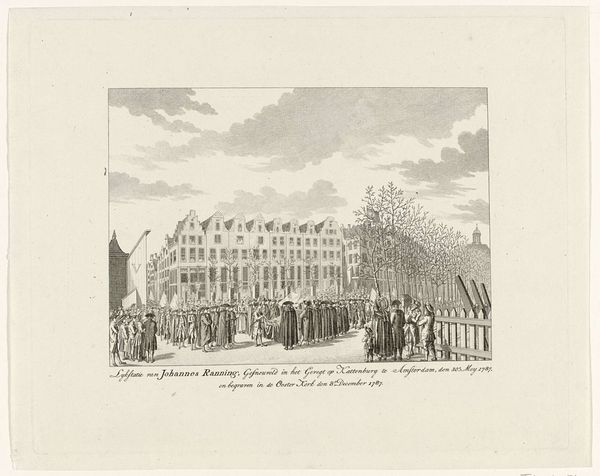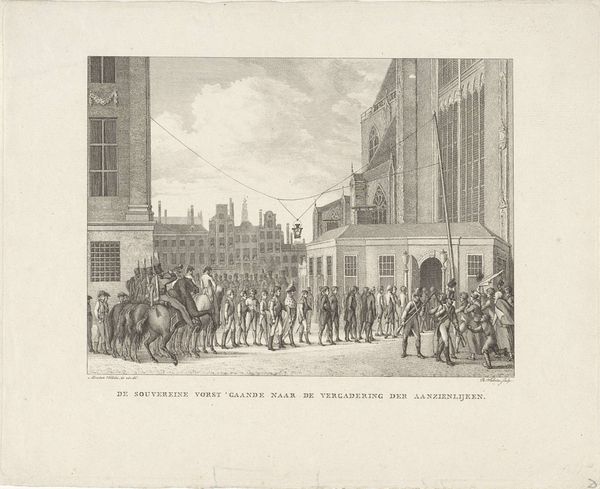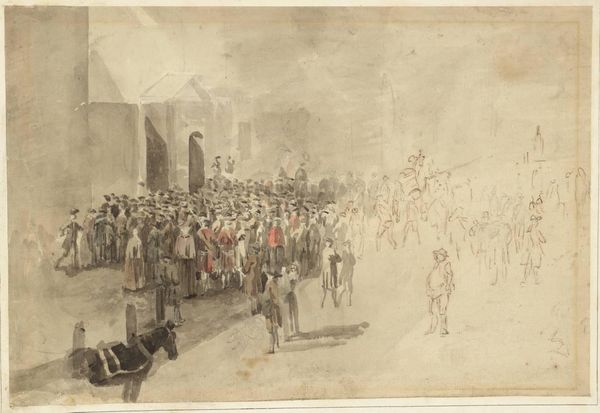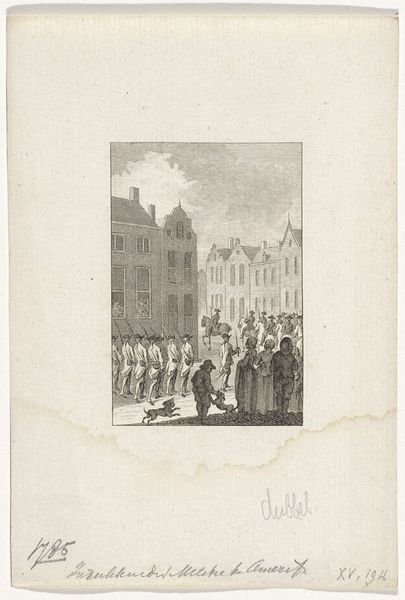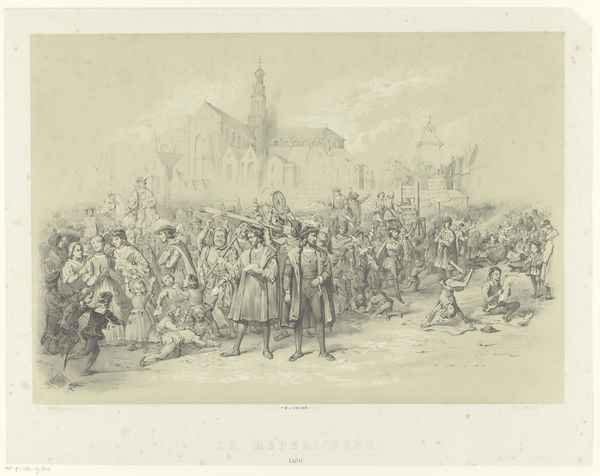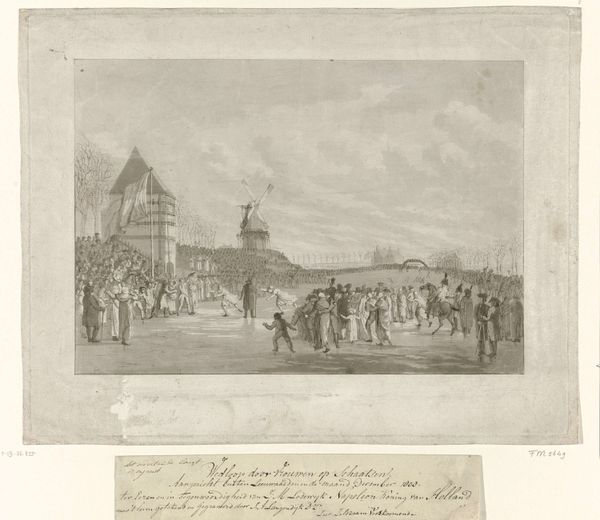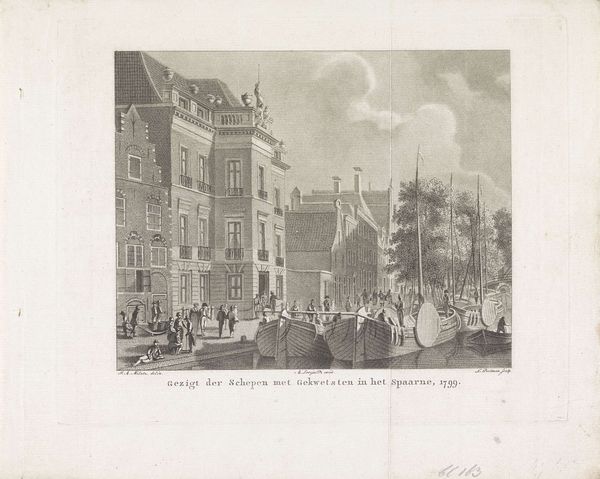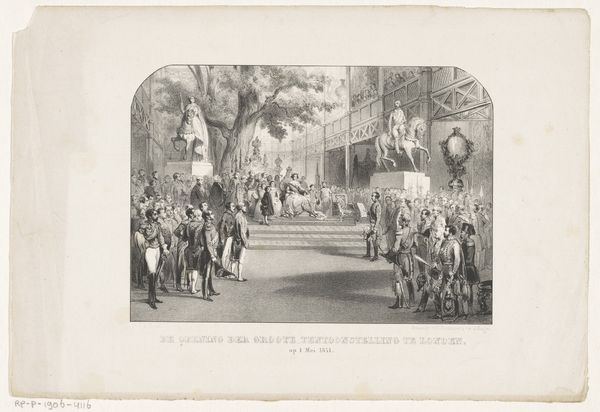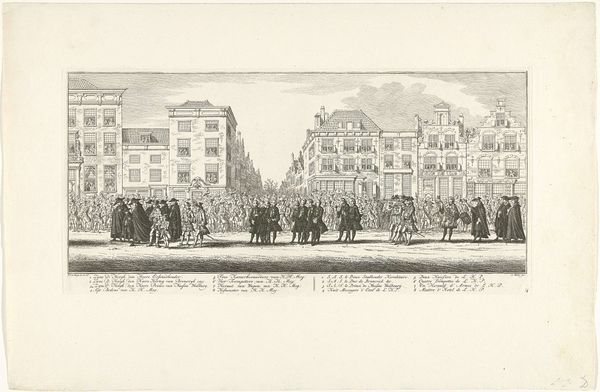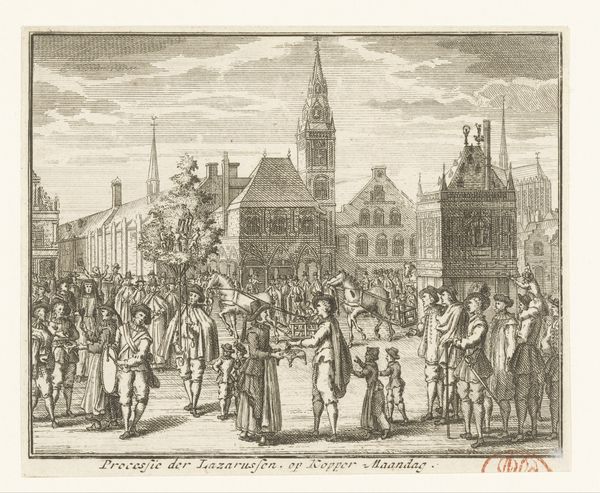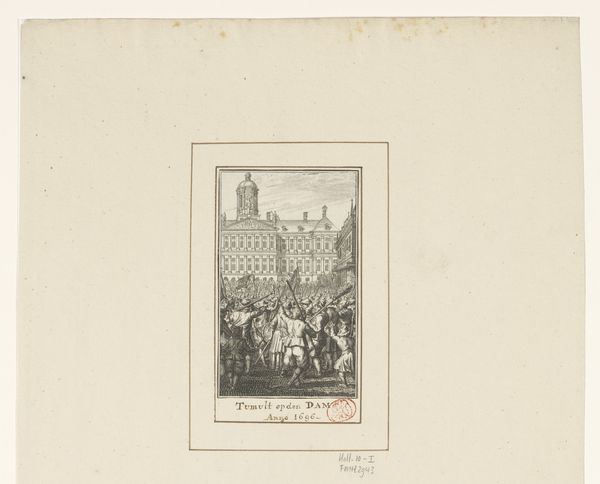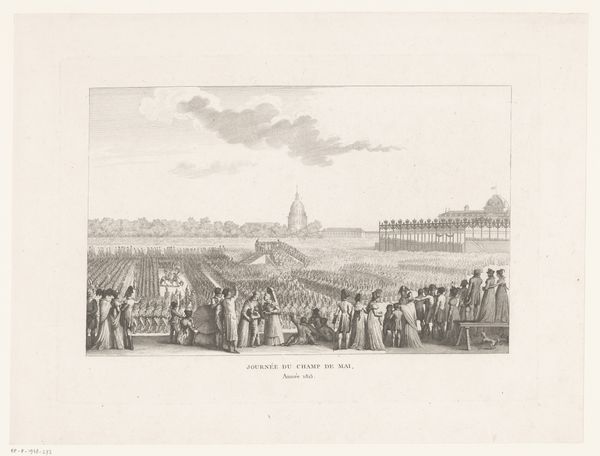
Utrecht door de patriotten verlaten, 1787 1853 - 1861
0:00
0:00
lithograph, print
#
neoclacissism
#
dutch-golden-age
#
lithograph
# print
#
pen illustration
#
old engraving style
#
cityscape
#
history-painting
#
realism
Dimensions: height 162 mm, width 241 mm
Copyright: Rijks Museum: Open Domain
Editor: Here we have “Utrecht door de patriotten verlaten, 1787”, a lithograph print by Christiaan Lodewijk van Kesteren, created sometime between 1853 and 1861. The lines feel very precise. What historical production and social elements are apparent in this image? Curator: Well, first note it's a 19th-century lithograph depicting an 18th-century event. Lithography allowed for wider distribution of images, and consider the subject: the departure of the Patriots from Utrecht in 1787. What message was the artist and publisher trying to convey, so long after the actual event? What does it tell us about the means of production influencing our view of the past? Editor: So, the choice of lithography, a relatively accessible printing method at the time, suggests an intent to widely disseminate this image. It feels almost propagandistic. Curator: Exactly! Now consider the artistic style employed. You mentioned the precision. Note the influence of realism but with a sense of Dutch Golden Age and neoclassicism mixed. These elements are also part of the meaning behind this image. Who was the target audience, and what did these stylistic choices mean to them in the mid-19th century? Was the intention aligned with social commentaries about patriotism or national identity? Editor: So, it’s not just about accurately depicting the past. It's also about influencing the present by reinterpreting a particular version of it, aided by developments in the means of reproduction! Curator: Precisely. It makes you think about labor, how printmaking enables the production of history, and even the ways that patriotic views were crafted and consumed. The art reflects production of national sentiments in an industrialized era. What are your final thoughts? Editor: I see it as a material object carrying political weight beyond its mere depiction of an event. The printing process shaped the social and historical meaning of this image. Curator: A fantastic point. And a critical lens for any artwork: process, materials, context!
Comments
No comments
Be the first to comment and join the conversation on the ultimate creative platform.

